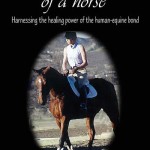
According to Wikipedia, Emotional intelligence (EI) is an ability, skill, or, in the case of the trait EI model, a self-perceived ability to identify, assess, and control the emotions of oneself, of others, and of groups. While much has now been written about emotional intelligence, Daniel Goleman, author of Emotional Intelligence: Why It Can Matter More Than IQ, has been most closely associated with the term. Goleman[1] presents a model of EQ that defines EQ as a wide array of competencies and skills that drive leadership performance. Inherent in this model are four main EI constructs: Self-awareness, Self-management, Social awareness, and Relationship management <http://en.wikipedia.org/wiki/Interpersonal_relationship>. Certainly these skills are important for the plethora of human interactions we encounter, and study of them has centered on these human interactions, however, the question remains, does emotional intelligence cross species? That is to say, would a person who exhibits a high degree of emotional intelligence with people display an equitable level of intelligence with animals like, say, horses.
Unlike IQ, which can be demonstrated verbally, EQ is much less easily displayed. Sure, a person can speak about the importance of self-understanding, emotional regulation, and interpreting and responding to the emotions of others, but this would be nothing more than lip service without the attendant nonverbal action. What this essentially means, and the reason that horses have been promoted as barometers and purveyors of a high degree of emotional intelligence is that EQ must be acted out. Attuning to the emotions one experiences, managing them, and reading and responding to the emotions of others are all actions — and primarily non-verbal ones at that. But once a person does display these behaviors with a horse and easily develops good rapport, would this person then display a high degree of EQ with a person?
Not necessarily. Take an autistic person for example. Here is a person who struggles socially, often experiencing hindered social interactions, difficulty developing and maintaining relationships, and most prominently, appropriately responding to social cues. However, autistic people do wonderfully with horses, and often even better than their non-affected counterparts. Temple Grandin, author of Animals in Translation, and an autistic herself, has studied animal-autistic interactions for over a century and posits that it is the fact that autistics tend to see things in “pictures” and/or to feel interactions rather than “think” them that facilitates their relationships with horses. Much can be said for this approach as it is well known that horses’ responses and behavior are dominated by their physiological responses as opposed to cognitive processes, as it is with humans.
So if the emotional intelligence a person displays with horses is not necessarily predictive of EQ with people, would the reverse also be true? That is, would people with a high EQ shown with other people then easily develop rapport with a horse?
Again, not necessarily. For example, many gifted horseman turned to horses because their human interactions were challenged. Both Buck Branaman and Monty Roberts, two masters in the field of horsemanship and horse training, describe early physical abuse and trouble relating to people as a result. Indeed, both of these men intimated having to work very hard at developing rapport with people.
So while any assertion that emotional intelligence does cross species may have inherent challenges, what can be said is that, quite obviously, displaying emotional intelligence with a horse and with people are not mutually exclusive. Autistics do demonstrate improved social interaction after fine tuning their skills with horses, and working on developing rapport with people will help in learning how to be aware and manage one’s own emotions when with a horse. And when comparing the typical way of improving EQ — which is through computer generated assessment tests — spending time with a horse may be all the more appealing.
Reference:
1. Goleman, D. (1998). Working with emotional intelligence. New York: Bantam Books
I really enjoyed your article and posted it on our facebook page.